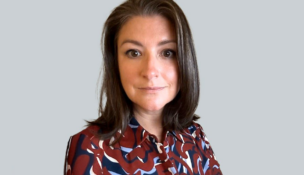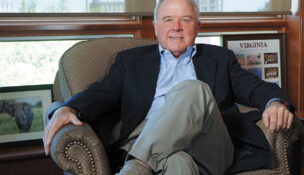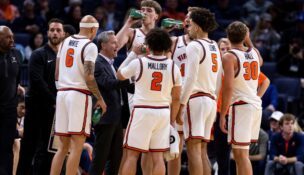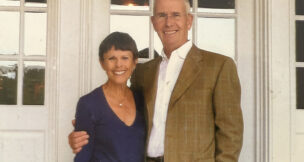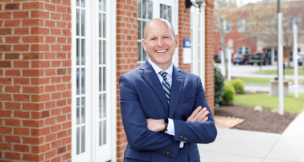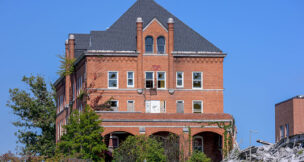Is DEI done at the University of Virginia?
Youngkin, Trump administration demand answers

The Justice Department gave the University of Virginia until May 30 to provide proof the university is dismantling and dissolving its diversity, equity and inclusion apparatuses. Photo by Jay Paul

The Justice Department gave the University of Virginia until May 30 to provide proof the university is dismantling and dissolving its diversity, equity and inclusion apparatuses. Photo by Jay Paul
Is DEI done at the University of Virginia?
Youngkin, Trump administration demand answers
SUMMARY:
- U.Va. board voted to dissolve DEI office after Trump executive order
- However, conservative critics say university hasn’t gone far enough
- Department of Justice issued a May 30 deadline for U.Va. to prove progress in stripping out all DEI functions at university
- Some students, faculty and staff are concerned about impact on campus life
When she went through orientation at the start of the University of Virginia‘s 2024-25 academic year, first-year student Katherine Rattray felt welcomed.
The university founded by Thomas Jefferson in 1817 as an “academical village” constructed in part by enslaved people seemed to acknowledge, “Yes, this institution was built on slavery, but at the same time we’re trying to do better,” says Rattray, who is Black.
But after U.Va.’s board of visitors voted in March to dissolve the university’s Office of Diversity, Equity, Inclusion and Community Partnerships in response to an executive order from President Donald Trump, Rattray’s feelings have changed.
“It’s already a big deterrent for students to see that there’s not a lot of diversity on campus,” Rattray says of the university’s 55% white student body. “Rescinding this, it just becomes more words than actions.”

U.Va. is far from the only public university that has dissolved its DEI office in recent months. George Mason University, James Madison University, Virginia Tech, Virginia Commonwealth University and other universities across the nation have done the same, with university administrators and board members saying they didn’t have much choice in the matter, as their institutions stood to lose significant federal funding if they fought the White House on the issue.
For some observers, the Trump administration‘s war on DEI represents a backlash against racial progress made following the 2020 police murder of George Floyd in Minneapolis, which sparked widespread protests and pledges for societal change. Many businesses and universities subsequently hired DEI professionals to help diversify their staffs, among other measures.
Although U.Va.’s DEI office was founded in the 1990s, when its primary focus was to raise graduation rates of Black students, the university’s board of visitors voted in 2020 in favor of an initiative to double the number of racially diverse faculty members and to pursue a more diverse student body.
After the board’s vote to dissolve the office this March, Gov. Glenn Youngkin said in a statement, “The Board of Visitors voted for common sense, saying ‘no’ to illegal discrimination and ‘yes’ to merit-based opportunity. DEI is done at the University of Virginia.”
In April, board members followed up by rescinding the 2020 diversity resolution.
Despite these actions, conservative critics say U.Va.’s administration hasn’t gone far enough.
President Jim Ryan “is not going to do anything if the board doesn’t hold his feet to the fire. He’s going to do nothing,” says former U.Va. board member Bert Ellis, a Youngkin appointee who was the board’s most vocal opponent of DEI. Ellis was so vocal, in fact, that Youngkin ousted him from the board in April partly over his outspokenness.
Meanwhile, the U.S. Department of Justice has gotten involved, alleging that U.Va. is not doing enough to dismantle its DEI apparatus and issuing its president a compliance deadline.
Word on the Grounds
“In hindsight, I’m not sure that the DEI office was the right title for it because it felt like a lot of what it did was either legal compliance or really just trying to build community within the faculty, within the students, within the community,” says Jeri K. Seidman, associate professor of commerce and chair-elect of U.Va.’s faculty senate. “Not necessarily anything that was singling any particular group out, but rather just trying to create welcoming relationships amongst all of the stakeholders.”
As at other public universities that receive federal funding, U.Va.’s DEI office also served as an umbrella for departments responsible for compliance with federal laws, including Title XI, which aims to prevent racial discrimination at colleges, and Title IX, which opposes gender discrimination in everything from college athletics to campus rape investigations.
U.Va.’s DEI office also housed the Starr Hill Pathways program, a college and career pipeline initiative for Charlottesville and Albemarle County students in grades seven through 12.
Also, notes engineering professor Keith Williams, since the Supreme Court’s 2023 ruling overturning affirmative action in college admissions, U.Va. has already pivoted its focus on helping students based on merit and financial need, rather than race or ethnicity.
“We already knew that our challenge was to reach out to the students, particularly in Southwest Virginia and Richmond. That’s been our challenge as long as I’ve been there,” says Williams, former director of U.Va.’s Clark Scholars program, which aims to recruit more underrepresented students into STEM fields.
The loss of the DEI office’s support in that mission, he says, “certainly makes it harder. I do think that it’s our job now, it’s our task to step up and to communicate better with students and make them feel welcome here, regardless of where they come from.”
Despite the U.Va. DEI office’s three-decade history, the focus on diversity, equity and inclusion at Mr. Jefferson’s University reached an apex following national racial justice protests in summer 2020, when U.Va.’s board of visitors endorsed several recommendations by a university racial equity task force, including an effort to double the number of faculty members from underrepresented racial, ethnic and gender groups by 2030 and to aim for a student population “that better reflects” the diversity of the state and nation.
The 2023 Supreme Court ruling and the current board’s April rescission sounded a death knell for these initiatives. Meanwhile, in March 2024, Youngkin signed a bill to ban all Virginia public universities from giving preferential treatment to legacy students.
Just as it’s not yet clear how these changes may impact demographics at U.Va., it’s also uncertain as to how successful the now-canceled DEI initiatives would have been at diversifying the university.
In 2016, 51% of all first-year applicants offered admission to U.Va. were white, a number that fell to 41.4% in 2022, while the numbers of Asian and Black students offered admission rose over that period. But in 2024, the number of Black students offered first-year admission fell from 924 students in 2023 to 633, while white, Hispanic and Asian admissions numbers increased slightly over the previous year.
Speaking from his own experience, Adrian Villanueva, a first-year engineering student, says being part of the Clark Scholars program helped him choose U.Va.
“If I wasn’t offered Clark, I don’t know that I’d be at U.Va., to be honest,” Villanueva says. “Diversity is what makes U.Va., specifically engineering, the place that it is. Different backgrounds provide different insight into different perspectives on a certain issue or topic and might even expose parts of that issue that people from a certain background might not have even considered.”
Second-year student Mara Williams, a computer engineering major, adds that student groups like the Korean Student Association, the Chinese Student Association, Black Engineers and others will now have more to do to help students feel welcome.
“There’s going to be a bigger role and importance for them to step up,” Williams says. “I worry what this message is sending to people who are not being supported anymore.”
DEI opposition
Critics of the DEI office and other university diversity initiatives say they led to unnecessary spending and prevented the hiring of people with moderate or conservative views at U.Va., among other impacts.
Broadly, the presence of the DEI office also led to members of the school community being afraid to voice any countering viewpoints, says Joel Gardner, executive director of The Jefferson Council, a conservative alumni group co-founded by Ellis.
DEI, argues Gardner, “became an overwhelming philosophy that snuck into every nook and cranny of life on the grounds,” and civil debate “became corrupted by the fact that this university became an echo chamber where most administrators and most faculty all believed the same thing.”
However, in a 2023 piece about “cancel culture” and the argument that conservative-leaning students and faculty members are self-censoring, Ryan and then-provost Ian Baucom wrote, “We should be concerned about self-imposed censorship, to be sure. But we should be a lot more concerned about censorship at the hands of the government — or university leaders, for that matter. … That means protecting the rights of our faculty, students and staff to speak about ideas on which society is divided, no matter how uncomfortable it might make us.”
Stating that Ryan’s administration has “been very committed to free speech,” Seidman says that people “should not feel deterred” to continue to speak out on political topics.
And “regardless of where the [Title XI and Title IX] offices are housed, the presence of those offices and their ability to investigate and to enforce those laws is going to stay the same,” Seidman says.
In April, Ryan was one of more than 560 signers of the American Association of Colleges and Universities’ “A Call for Constructive Engagement,” a public letter condemning what it calls the second Trump White House’s “unprecedented government overreach and political interference.” The letter called for the freedom of faculty, students and university staffers to “exchange ideas and opinions across a full range of viewpoints without fear of retribution, censorship or deportation.”
Ellis says he doesn’t see any concern about Trump exerting influence on what universities may or may not teach. The president, he says, has a philosophy of, “You don’t need our money, you don’t need any of our rules, but if you need and want our money, we have some standards and some conditions that we’re gonna impose.” And Ellis adds, “I think that’s totally fair.”
Gardner, although stopping short of calling for Ryan’s resignation, expresses doubt that Ryan’s administration will do away with all diversity and equity initiatives. “In order to actually root out DEI from this university, it’s going to take a massive, massive effort and a timely effort. Unless you have an administration that takes that seriously, just not going to happen.”
In late April, a day before the special meeting of the board of visitors, the U.S. Department of Justice sent a letter to Ryan, U.Va.’s general counsel and Rector Robert Hardie stating that the university had until May 2 to produce evidence that every division of the university and its health system had dismantled DEI departments and initiatives.
Signed by U.Va. Law alumna Harmeet K. Dhillon, now head of the DOJ‘s civil rights division, the DOJ letter alleges that Dhillon’s office received complaints that an internal report on U.Va.’s 30-day progress in ending DEI operations at the university after the March 7 vote had not been made public, and that U.Va.’s administration “may have failed to implement these directives.”
The same day as the DOJ letter, the Jefferson Council posted a tweet complaining that several of its researchers and allies had not been able to get a copy of the report, despite multiple FOIA requests.
Meanwhile, the university received a brief reprieve from the Justice Department, which granted U.Va. an extension until May 30 to respond regarding the university’s efforts to eliminate DEI.
University of Virginia at a glance
Founded
Sometimes called Mr. Jefferson’s University or just The University, U.Va. was founded by Thomas Jefferson in 1819. Its first board of visitors included Jefferson and fellow U.S. Presidents James Madison and James Monroe.
Campus
With roughly 1,240 contiguous acres around its UNESCO World Heritage Site campus or “Grounds,” U.Va. is known for its distinctive Jefferson-designed Rotunda building located on the Lawn, the school’s 4.5-acre grass quad where graduations are held. U.Va.’s other major holding is the University of Virginia’s College at Wise, a four-year liberal arts college in Southwest Virginia.
2024-25 enrollment
17,901 undergraduate students
8,569 graduate students
5% international undergraduates
19% international graduate students
30% minority enrollment
67% in-state undergraduate students
Employees
Approximately 3,300 full-time faculty, 7,800 full-time staff and 12,800 UVA Health staff
Academic programs
Notable for its medicine, law and business schools, U.Va. offers more than 200 majors across 12 schools.
Tuition, fees, housing and dining
Includes average room and board, education and general fees, plus books, travel and personal expenses for general undergraduates.
In-state residents: $39,494
Out-of-state residents: $79,574
Sources: State Council of Higher Education for Virginia; University of Virginia
s

